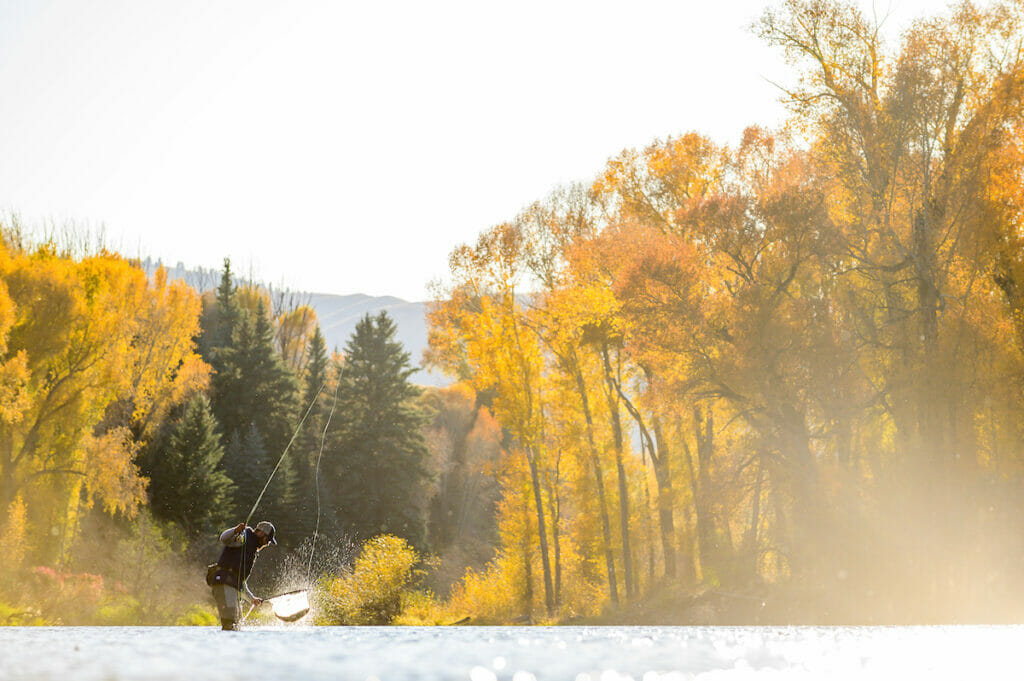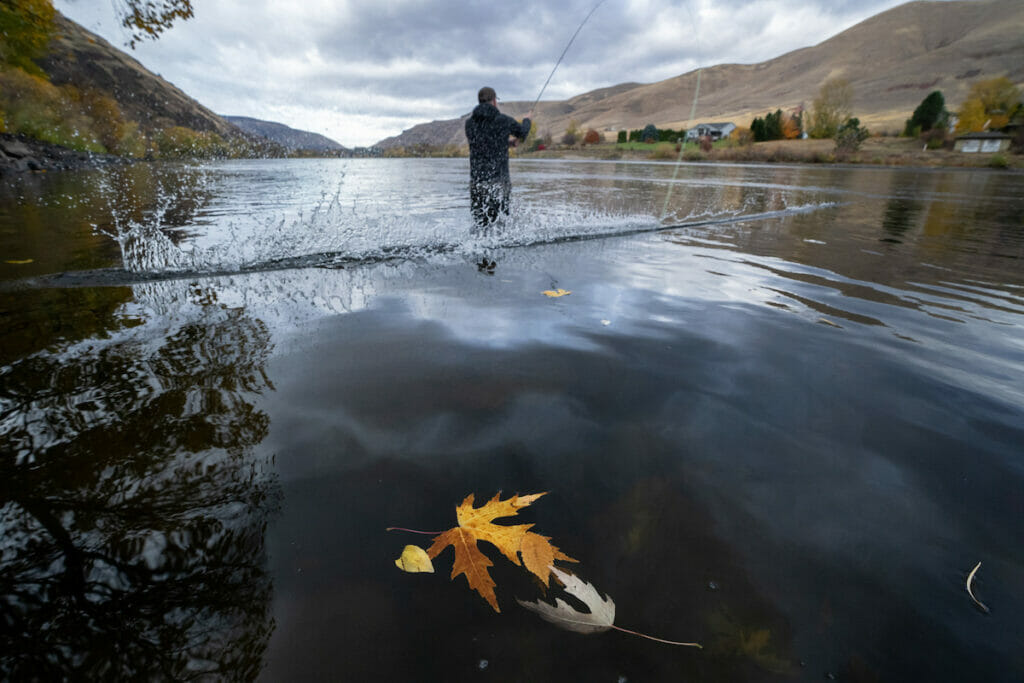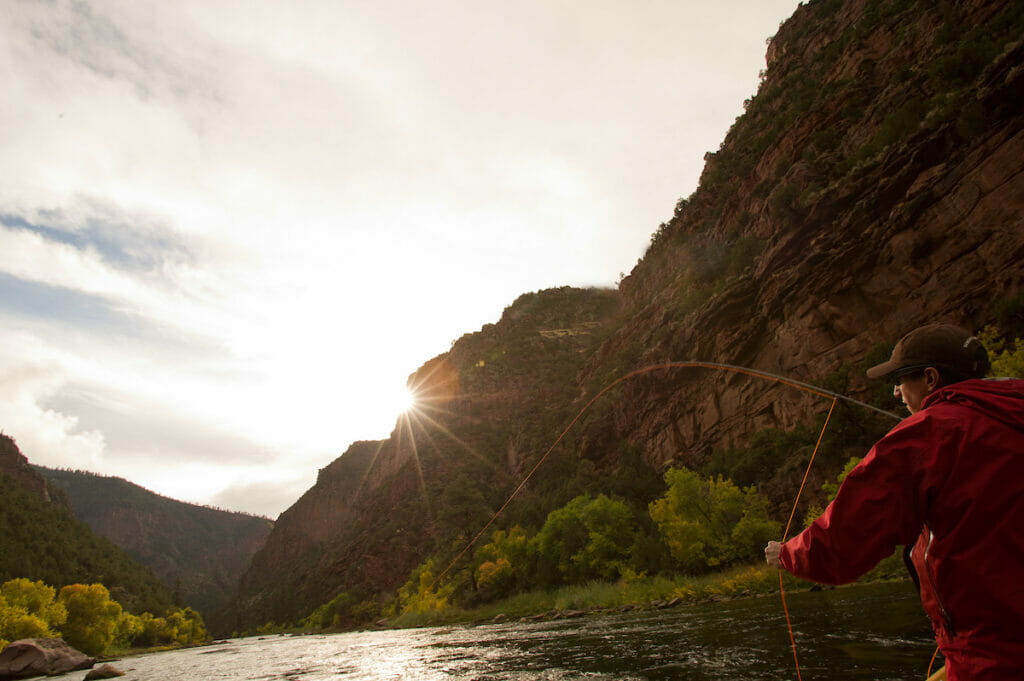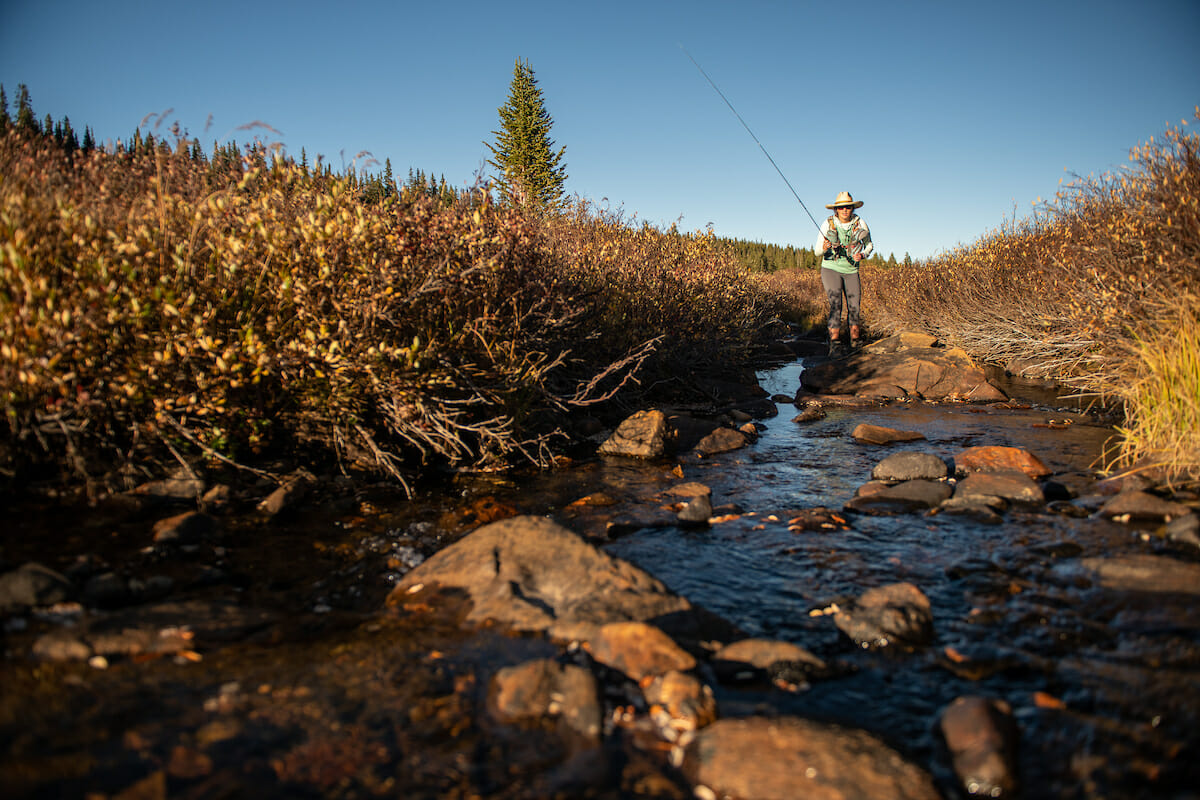Can you imagine an NFL game where the kicker gets to boot away until the ball finally travels through the uprights?
How about baseball where it’s “10 strikes, yer out!?” Or how about matches at golf’s Ryder Cup with unlimited “Mulligans?”
None of that makes sense and neither does fly-fishing when we’re firing casts off willy-nilly without any real purpose. But I often find myself making lazy, misguided casts, and then I wonder why the fish aren’t biting.
Sight fishing—where you actually see the fish before you cast at it—is widely considered “top of the game” when it comes to fly fishing. That’s because seeing the fish automatically puts your mind to work and forces you to work with purpose.

How far away is it? What is it eating? If I do hook it, where is it likely to go?
Only after you’ve considered all these factors and made a plan do you wind up and unfurl your best shot. Sometimes that works, and you’ve solved the puzzle. Awesome! And sometimes not… that’s fishing.
Sometimes the fish will tell you what you goofed up—you lined it, you splashed your fly too much, you chose the wrong bug, etc.—so you learn and move on. What almost never happens: that fish eats a fly after a second mirror cast of the one that didn’t work in the first place.
I call that the “frustration cast” and it has no real purpose.

Of course, more often than not when we fish for trout, we don’t actually see the fish. We might see them eat off the surface, or push a wake along the bank, but those are telltales. Much, much more of the trout fishing game is learning to anticipate where they might be in a river (or lake) without seeing them.
I’ve always said that fish like changes—changes in currents, changes in depth (often indicated by changes in color) and changes in structure (like in front of rocks or around submerged logs and so on). Find a place where you note a couple of “changes” and, that’s a good hunch of where the trout might be.
Cast in those places, where you know they might be, and you’re also casting with purpose. You see, there’s a fine difference between prospecting and covering water with purpose.
If you can identify ripe targets for every cast, even if you don’t see the fish, you will be more successful. Treat that little seam of bubbles in the dark water like you just saw a 20-incher rise there, even if there is no fish. That will force you to be more calculated, more reserved and economical with your casts. And that’s one thing that sets a truly skilled angler apart—it’s not just the ability to make fancy loops and cast, it’s knowing when and where to put those casts and make them matter.

Fewer, better, more accurate, more purposeful casts will always carry the day over. “What the heck” shots that stir things up, make unnecessary shadows and splashes will ultimately drive the fish away.
After all, trout rarely grant Mulligans.



